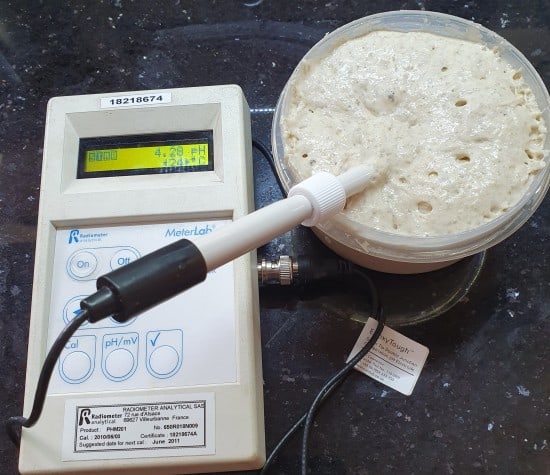Sourdough vs Regular Bread: Which is More Nutritious in 2024?

Bread has been a staple food for thousands of years, but the debate between sourdough and regular bread has recently gained momentum. As people become more health-conscious, they’re taking a closer look at the nutritional content of their daily bread. This comparison has become especially relevant in 2024, with growing interest in traditional fermentation methods and their potential health benefits.
This article delves into the nutritional differences between sourdough and regular bread. It examines their respective vitamin and protein contents, explores how sourdough fermentation affects digestibility, and compares their impact on blood sugar levels. By understanding these factors, readers can decide which type of bread best aligns with their dietary needs and health goals.
Understanding Bread Types
Regular Bread Production
Regular bread, also known as commercial bread, is made quickly and efficiently. This method typically involves using concentrated yeast, either fresh or dry, to make the dough rise rapidly. The ingredients for regular bread usually include flour, water, salt, and commercial yeast. Some commercial breads may also contain additives like sugar, preservatives, and other chemicals to enhance consistency and shelf life.
The production process for regular bread is relatively fast. After mixing the ingredients, the dough undergoes a short fermentation period, often lasting only a few hours. This quick process allows mass production, making regular bread widely available and affordable. However, this rapid fermentation doesn’t allow for the same flavor development or gluten breakdown as in sourdough bread.
Sourdough Bread Making
Sourdough bread, on the other hand, uses a more traditional and time-consuming method. The critical difference lies in the leavening agent. Instead of commercial yeast, sourdough bread relies on a sourdough starter, a live fermented culture made from flour and water. This starter contains wild yeast and bacteria in the flour and air.
The sourdough bread-making process begins with feeding the starter to activate it. Once bubbly and active, a portion of the starter is mixed with flour and water to form the dough. The dough then undergoes a long fermentation process, which can take 3 to 24 hours or even longer. This extended fermentation allows for the development of complex flavors and the breakdown of gluten proteins.
Key Differences
The main differences between sourdough and regular bread lie in their leavening agents, fermentation times, and resulting characteristics:
Leavening: Sourdough uses wild yeast and bacteria, while regular bread uses commercial yeast.
Fermentation time: Sourdough has a much longer fermentation time than regular bread.
Flavor: Sourdough bread typically has a more complex, tangy taste due to the lactic acid bacteria present in the starter.
Texture: Sourdough often has a chewier texture and crispier crust than regular bread.
Digestibility: The long fermentation process in sourdough bread can make it easier for some people to digest.
Shelf life: Sourdough bread generally has a longer shelf life due to the natural acids produced during fermentation.
These differences result in distinct taste profiles and potential health benefits, making sourdough bread popular for many bread enthusiasts and health-conscious consumers.
Nutritional Profile Comparison
When comparing sourdough vs. regular bread, examining their nutritional content is essential. Both types of bread offer various nutrients, but there are some key differences to consider.
Calorie Content
The calorie content of sourdough and regular bread is relatively similar. A medium-sized slice of sourdough bread (59 grams) contains approximately 188 calories. A slice of commercially prepared white bread typically provides about 75 calories. The slight difference in calorie content is often due to variations in slice size and ingredients used.
Protein and Carbohydrates
Sourdough bread generally has a higher protein content compared to regular white bread. A 59-gram slice of sourdough contains about 7.67 grams of protein, while a slice of white bread has around 2.5 grams. This higher protein content in sourdough can contribute to increased satiety.
Both types of bread are rich sources of carbohydrates. A slice of sourdough bread contains approximately 36.5 grams of carbohydrates, including 1.8 grams of fiber. Regular white bread has a similar carbohydrate content, with about 14 grams per slice, but may have slightly less fiber.
Essential Nutrients
Both sourdough and regular bread provide essential nutrients, but sourdough often has an edge due to its fermentation process. Sourdough bread is a good source of B vitamins, including thiamine, riboflavin, niacin, and folate. These vitamins are crucial in energy metabolism, cellular function, and overall health.
Sourdough bread also contains minerals such as iron, selenium, and manganese. The fermentation process can enhance the bioavailability of these minerals by reducing the levels of phytic acid, an antinutrient that can interfere with mineral absorption.
Regular white bread, primarily when enriched, can also provide B vitamins and minerals. However, the refining process used to make white flour often strips away some of the natural nutrients in whole grains.
One notable advantage of sourdough bread is its potential prebiotic content. Fermentation can produce compounds that feed beneficial gut bacteria, supporting digestive health.
It’s worth noting that the nutritional profile of both sourdough and regular bread can vary depending on the type of flour used and any additional ingredients. Whole-grain versions of both breads generally offer more fiber and nutrients than those made with refined flour.
In conclusion, while sourdough and regular bread share similar nutritional profiles, sourdough often has a slight edge regarding protein content, mineral bioavailability, and potential prebiotic benefits. However, the overall nutritional value of any bread depends on various factors, including the ingredients used and the manufacturing process.
Digestive Health Impact
The digestive health impact of sourdough bread compared to regular bread has gained significant attention in recent years. Research suggests that sourdough bread may offer several benefits due to its unique fermentation process.
Gluten Content
While sourdough bread is not gluten-free, it typically contains lower levels of gluten than regular bread. The long fermentation process in sourdough bread-making allows for the partial breakdown of gluten proteins. This breakdown can make sourdough bread easier to digest for some people who are sensitive to gluten or have irritable bowel syndrome (IBS).
Studies have shown that the fermentation process in sourdough bread modifies parts of the gliadin and glutenin proteins in wheat flour, which are toxic to individuals with celiac disease. However, it’s important to note that sourdough bread is not suitable for those with celiac disease or severe gluten intolerance.
Prebiotic Properties
Sourdough bread contains prebiotic properties that can support digestive health. Prebiotics are non-digestible fibers that serve as food for beneficial gut bacteria. The fermentation process in sourdough bread produces compounds that act as prebiotics, helping feed and promote helpful gut bacteria growth.
One potential prebiotic released by lactic acid bacteria in sourdough starters is beta-glucan, which has been shown to boost probiotic activity after digestion. This prebiotic effect can contribute to a more diverse and balanced gut microbiome associated with better overall digestive health.
Gut Microbiome Effects
The impact of sourdough bread on the gut microbiome is an area of growing interest. The fermentation process in sourdough bread-making involves wild yeast and lactic acid bacteria, which can positively affect the gut microbiome.
Sourdough fermentation breaks down phytic acid, a compound in grains that can inhibit mineral absorption. This breakdown not only makes minerals more bioavailable but also produces enzymes that can aid in digestion. The lactic acid bacteria in sourdough produce an enzyme called phytase, which effectively “pre-digests” the phytic acid during the extended fermentation process.
Furthermore, the fermentation process in sourdough bread can produce short-chain fatty acids (SCFAs), particularly butyrate. Butyrate is an important fuel source for colonic epithelial cells and has been shown to have anti-inflammatory properties and support gut barrier function.
Research has also indicated that sourdough bread may have a lower glycemic index than regular bread. This means it can lead to a more gradual rise in blood sugar levels, benefiting overall metabolic health and potentially indirectly influencing gut health.
In conclusion, the digestive health impact of sourdough bread appears to be more favorable than regular bread. Its lower gluten content, prebiotic properties, and positive effects on the gut microbiome make it a potentially better choice for those looking to support their digestive health. However, more research is needed to fully understand the long-term effects of sourdough consumption on digestive health and the gut microbiome.
Metabolic Health Considerations
Glycemic Response
One key factor to consider when comparing sourdough vs. regular bread is its impact on blood sugar levels. Research has shown that sourdough bread generally has a lower glycemic index than regular bread. This means it causes a more gradual rise in blood sugar levels, which can benefit people managing diabetes or those concerned about their metabolic health.
The fermentation process in sourdough bread production plays a crucial role in this effect. During fermentation, the bacteria and wild yeast present in the sourdough starter break down some of the carbohydrates and gluten in the bread. This process results in a lower starch content and the production of organic acids, mainly lactic acid. These changes contribute to slower digestion and absorption of carbohydrates, leading to a more moderate glycemic response.
Studies have demonstrated that consuming sourdough bread can lead to lower blood glucose and insulin responses compared to regular bread. For instance, one study found that the glucose response to sprouted-grain sourdough bread was significantly lower than that of 11-grain, regular sourdough, and white bread when matched for available carbohydrates.
Insulin Sensitivity
The impact of sourdough bread on insulin sensitivity is another important consideration for metabolic health. Insulin sensitivity refers to how effectively the body’s cells respond to insulin, the hormone responsible for regulating blood sugar levels.
Research suggests that sourdough bread may positively affect insulin sensitivity compared to regular bread. Its lower glycemic index means that it typically requires less insulin to process the carbohydrates it contains. This can help reduce the overall insulin demand on the body, potentially improving insulin sensitivity over time.
Some studies have shown that sourdough bread results in lower insulin area under the curve (AUC) than other bread types. This indicates a reduced insulin response, which can be beneficial for maintaining stable blood sugar levels and potentially reducing the risk of insulin resistance.
Weight Management
The role of bread in weight management has been a topic of interest, particularly when comparing sourdough vs regular bread. While bread consumption, in general, has been associated with weight gain in some studies, the type of bread consumed can make a difference.
Sourdough bread may offer some advantages for weight management compared to regular bread. The lower glycemic index and improved insulin response associated with sourdough bread can improve appetite control and satiety. This means people may feel fuller for longer after eating sourdough bread, potentially reducing overall calorie intake.
Additionally, the fermentation process in sourdough bread production can increase the bioavailability of nutrients and reduce anti-nutrients like phytic acid. This improved nutrient profile may improve overall metabolic health and support weight management efforts.
However, it’s important to note that the impact of sourdough bread on weight management can vary depending on individual factors and overall diet quality. While sourdough bread may offer some benefits, it should still be consumed as part of a balanced diet and in appropriate portions for optimal metabolic health.
Conclusion
The comparison between sourdough and regular bread reveals significant differences in nutritional profiles and health effects. Sourdough bread stands out with its potential benefits for digestive health, lower glycemic response, and positive impact on the gut microbiome. These advantages stem from its unique fermentation process, which enhances nutrient availability and modifies gluten proteins. While both types of bread can be part of a balanced diet, sourdough’s characteristics make it a compelling choice for those looking to boost their overall health.
For those eager to explore the world of sourdough, The Yeast We Can Do offers an authentic artisanal sourdough starter to elevate your bread and pizza making – simply email john@theyeastwecando.com to get started. Ultimately, the choice between sourdough and regular bread comes from personal preferences and health goals. By understanding the differences between these bread types, consumers can decide which option best aligns with their dietary needs and taste preferences. As research in this area continues to grow, we may uncover even more insights into the health benefits of traditional fermentation methods in bread making.
FAQs
Is sourdough bread generally more nutritious than regular bread?
Yes, sourdough bread tends to be more nutritious than regular bread. It contains higher levels of vitamins, minerals, and antioxidants, and it is mainly made from whole grains.
Does sourdough bread contain fewer carbohydrates than regular bread?
Not significantly. A 1-ounce slice of sourdough white bread has about 15 grams of carbohydrates, while the same amount of regular white bread contains 14 grams. However, sourdough may offer slightly more protein and nutrients per slice.
What are some of the healthiest types of bread available?
The healthiest bread options include sprouted whole grain, sourdough, 100% whole wheat, oat, flax, 100% sprouted rye, and specific gluten-free bread. These varieties are rich in nutrients and beneficial for overall health.
Is it safe to eat sourdough bread daily?
Yes, consuming sourdough bread daily can be part of a healthy diet. The nutritional value can vary based on the type of flour used, but overall, sourdough is a wholesome choice.
If someone has difficulty digesting whole wheat due to its high fiber content, is sourdough white bread a better alternative?
For individuals who find whole wheat bread hard to digest due to its fiber content, switching to sourdough white bread can be a good alternative. Sourdough white bread still offers nutritional benefits and may be easier to digest.






